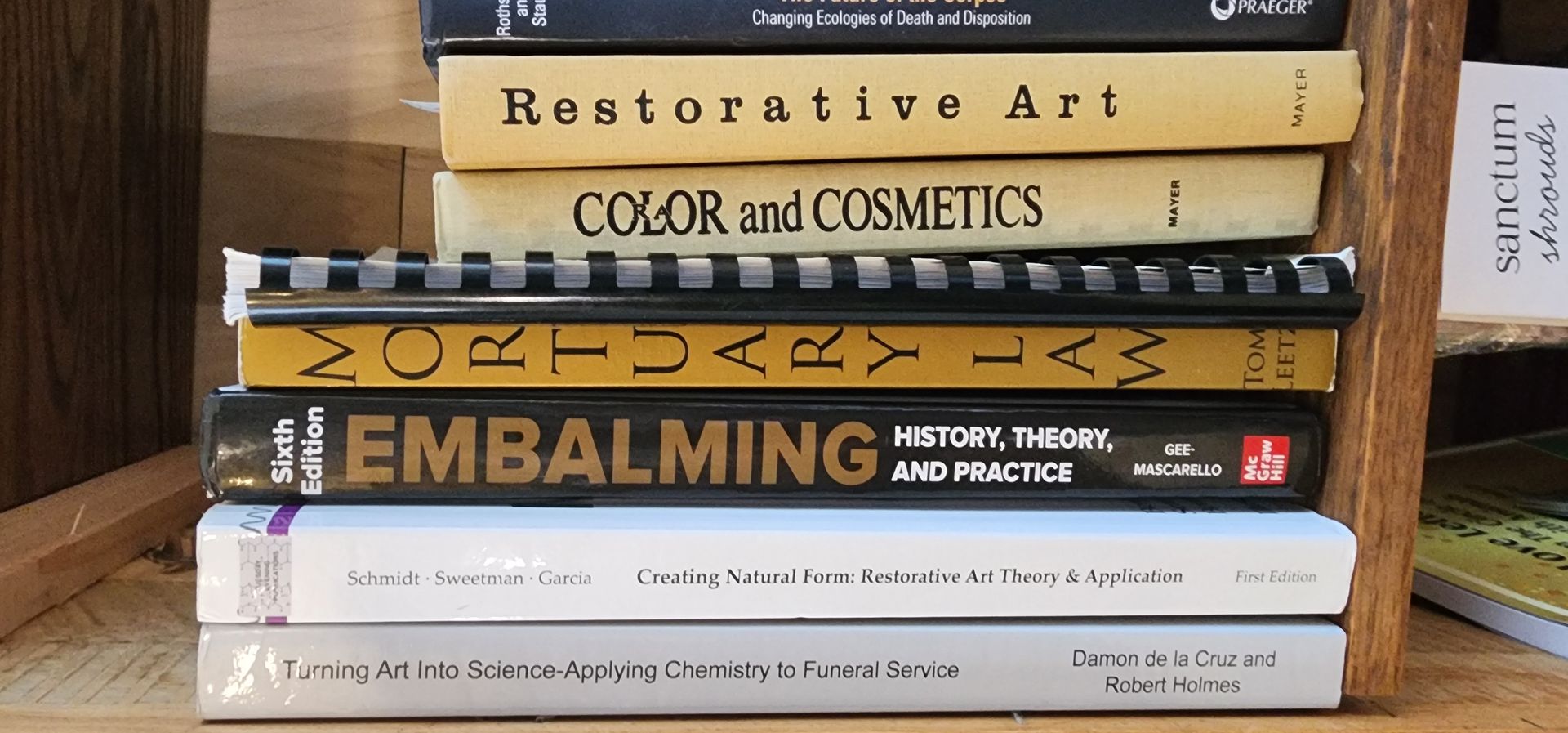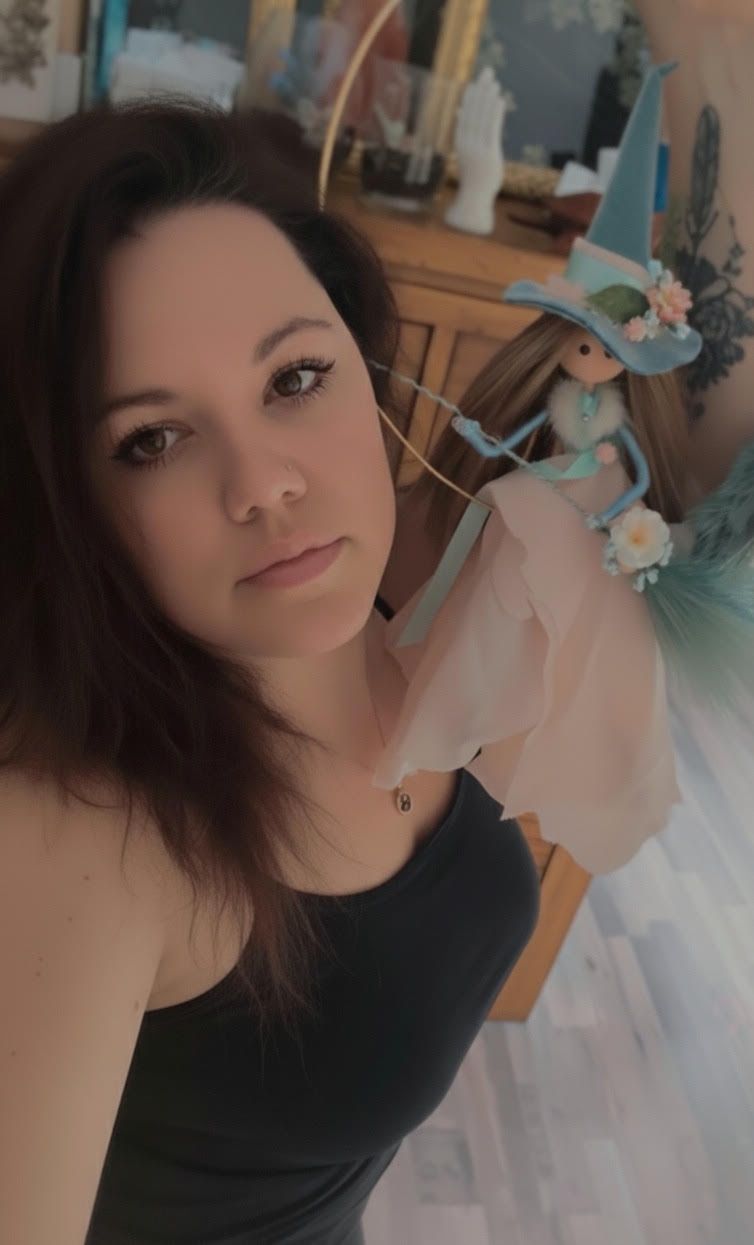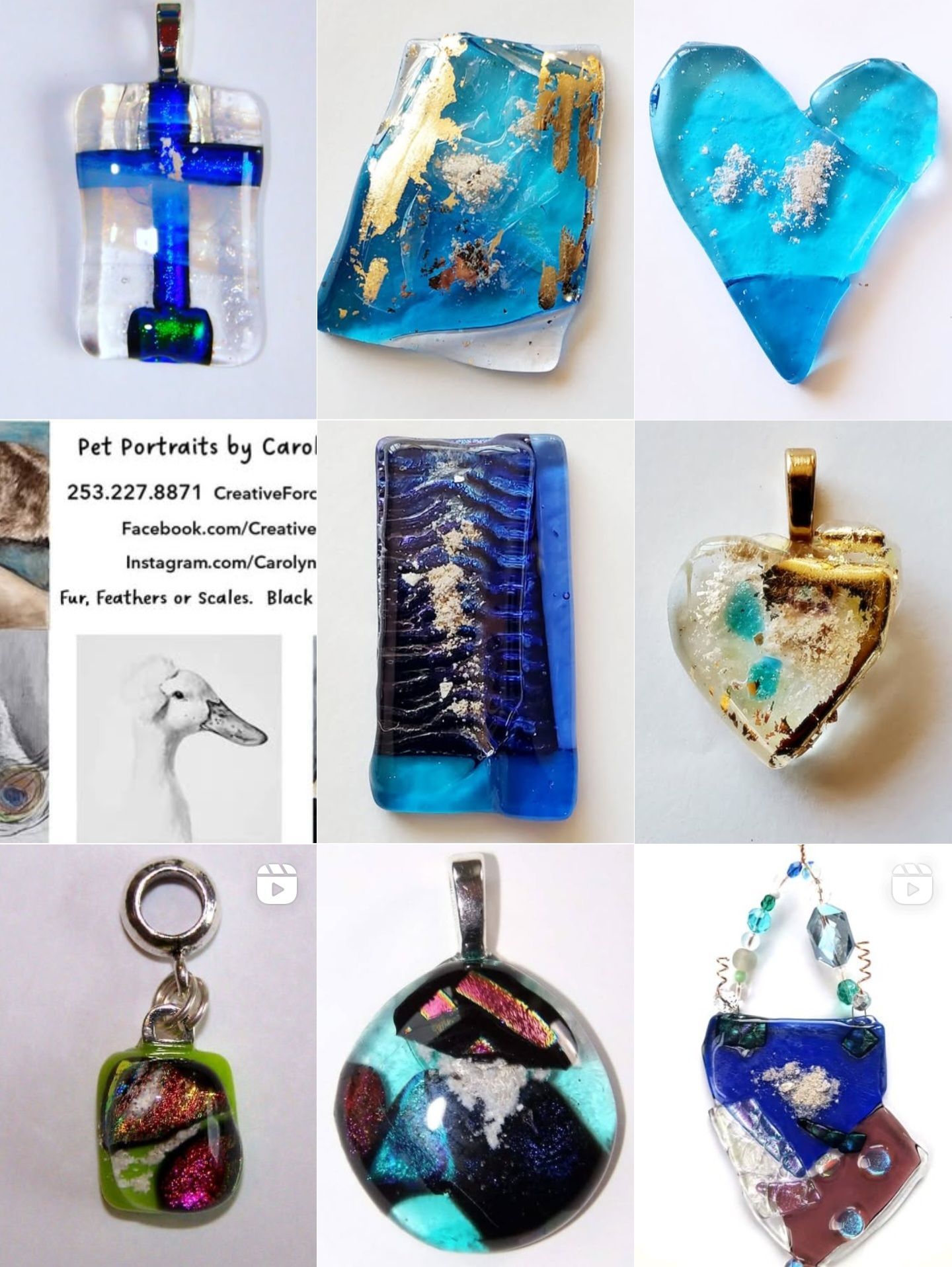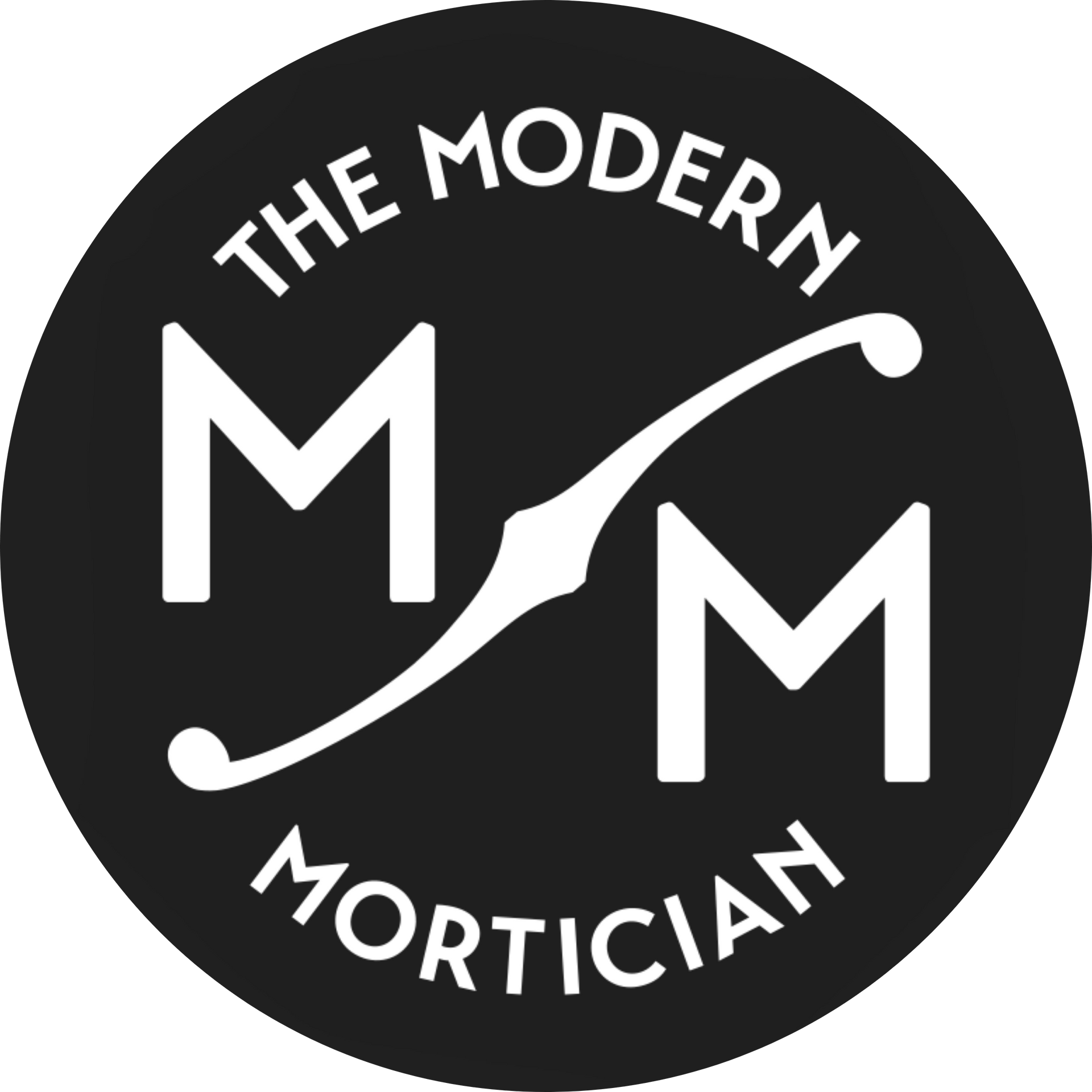Kendra Holliday
A Unique Display- guest post by Kendra Holliday
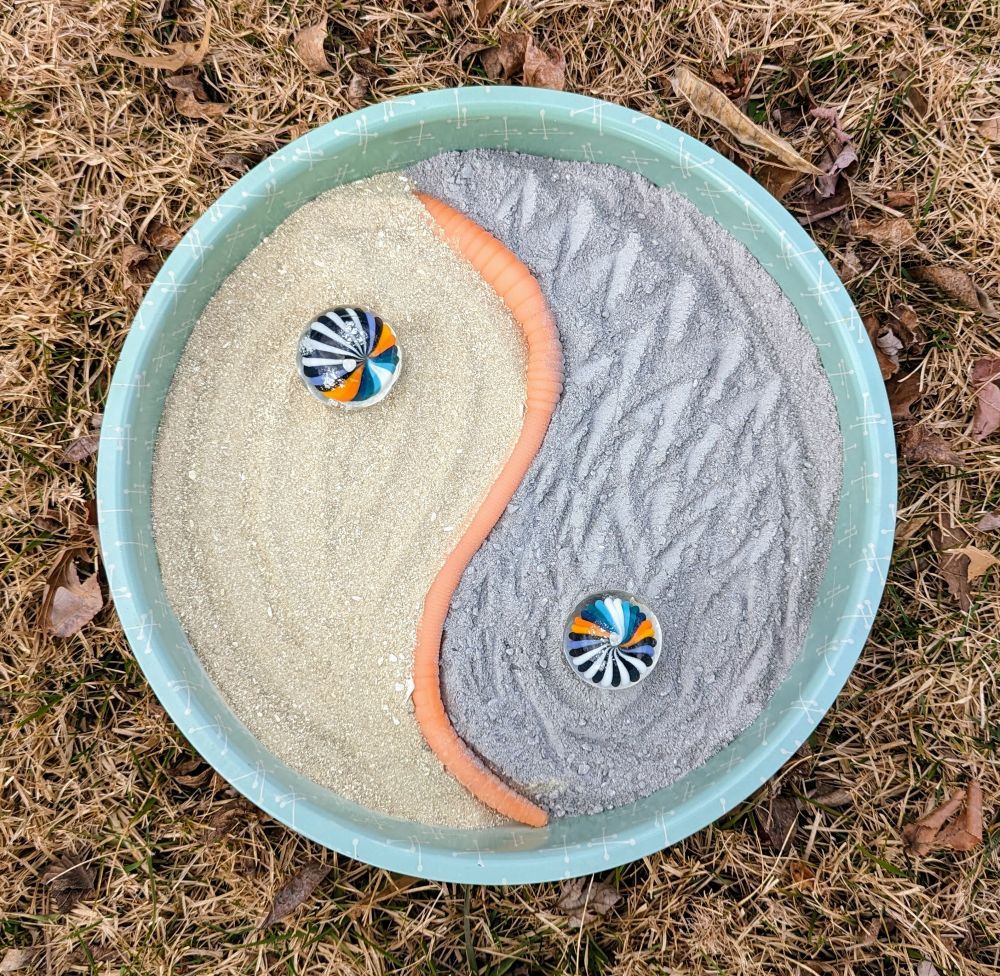
My mom died in 2019.
My dad died in 2023.
Thankfully, my family is death-positive (or morbid, depending on how you define it), and we were prepared for it.
In 2018, we got their end-of-life paperwork in place. We met with an estate lawyer who helped us with Power of Attorney and Wills.
A lifelong fan of true crime, my mom wanted to give back to the community, so she filled out paperwork for her and my dad to have their bodies donated to The Body Farm in Knoxville, Tennessee.
Unfortunately, she died of sepsis, so they couldn't accept her body for forensic research, so we had to go with a backup plan - to cremate her and bury her at our rural family cemetery.
But she wanted her ashes mixed with my dad's (so did he), so we held on to her cremains until it was his time. We did not embalm either one of them.
My sisters and I witnessed her cremation. It took place in a local cemetery's crematorium.
A few days later, we picked up her ashes from the funeral director. We each saved a little bit of them in miniature urns, but the bulk of her remains were waiting for my dad.
On her deathbed, she asked me to look after my dad, and I was glad to honor her wish. He had dementia, and it got a lot worse after she died, and he moved into an assisted living facility right as the pandemic hit.
By the time he died of Congestive Heart Failure in 2023, we had learned about aquamation, so we decided to go that route with dad. We're fortunate to have a good facility right here in St Louis (families have shipped bodies from Texas and other states to get aquamated), and the funeral director allowed the entire family to witness dad's aquamation.
I even got to turn the wheel on the steel chamber to get the process started.
After a body is cremated or aquamated, it's reduced to a pile of bones, which they place into a cremulator to grind them up into a sand-like consistency, the "ashes".
It hadn't occurred to me to ask with my mom, but for my dad, we asked if we could see his remains before they were ground up. To our morbid delight, the funeral director said yes!
So a few days after my dad was aquamated, my sisters and I went to view his bones.
Here I am, holding his thigh bone. It's quite surreal handling the remains of your parents, but we did so with great reverence and awe.
When we got his cremains back, we held a celebration of life for the both of them. We couldn't resist putting googly eyes on their cremains boxes - dad's aquamation box was green, mom's cremation box was black.
After the celebration, we mixed them together, but before we did that, we made a beautiful yin and yang design - dad's ashes are sandy colored, mom's are grey. They're separated with a toy earthworm, to symbolize going back to the earth. The two marbles contain ashes from my mom.
When the ashes were mixed together, they turned a lovely lavender color.
Then we planned a trip to the family cemetery, where we buried them at the grave of my baby brother, who died in 1980. We did it ourselves, taking turns digging.
Our parents would've been SO proud we honored them in such a personal way. We spent countless hours in that country cemetery, it was one of their favorite places.
Since it's located an hour away, I arranged to have a memorial bench installed in my neighborhood.
I walk to it and visit "them" everyday, but of course I carry them in my heart wherever I go.
They are both so much a part of me.
-
Kendra Holliday, daughter of Ken and Rita Prouty
https://www.osfuneralhomes.com/obituary/rita-ferguson-prouty
https://www.osfuneralhomes.com/obituary/kenneth-raymond-prouty
View all photos on Instagram
New Paragraph








